Guizhou Echo | 布依族的“声音活化石”听起来会是什么样?

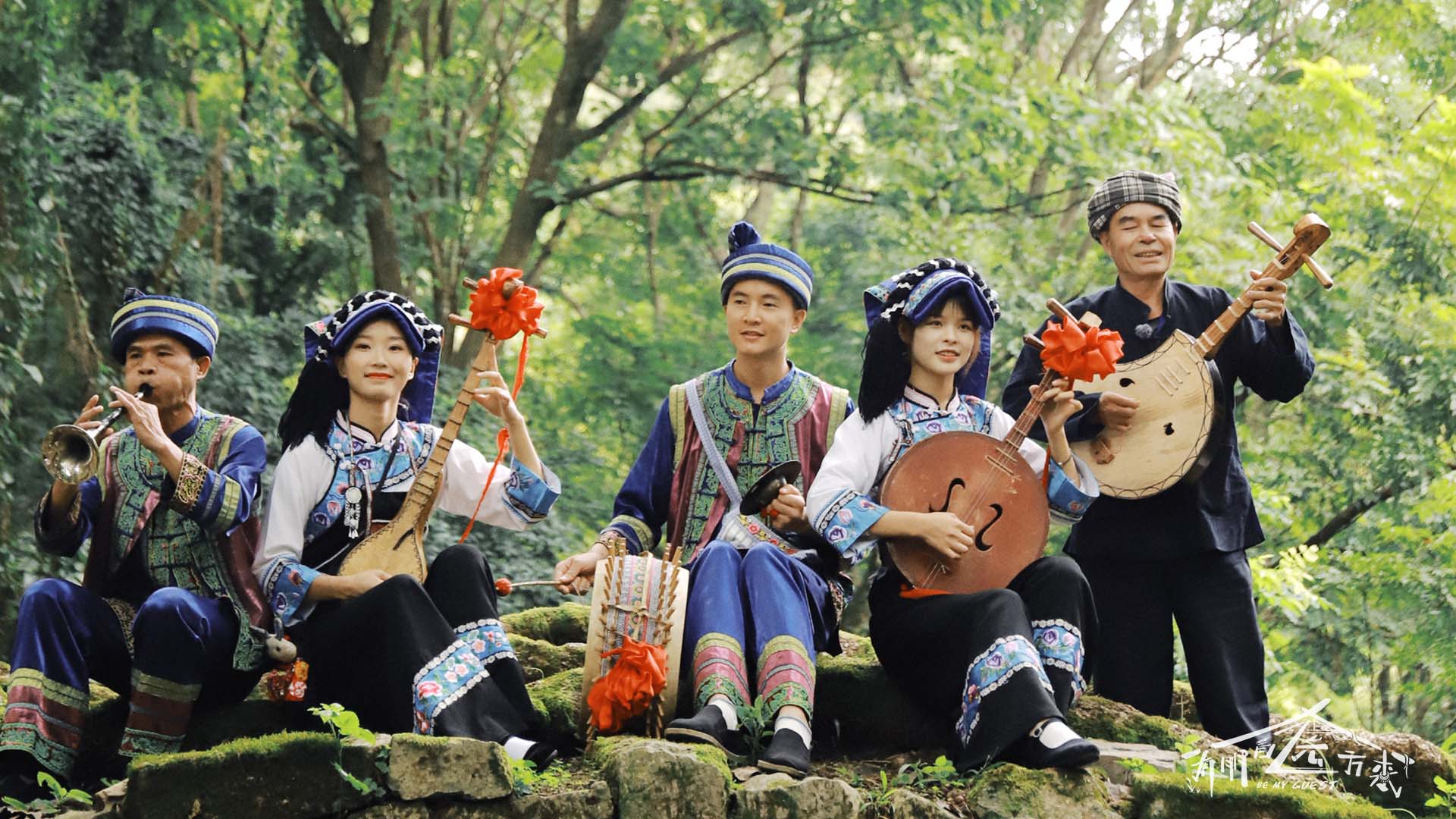
八音坐唱曲目《迎客调》
曲艺,在中国传播已久,而在贵州之西南,有一种说唱曲艺,其生于宫廷,又长于民间,充满了独特的贵州民族文化色彩。它便是布依族的“八音坐唱”,亦称“布依八音”。
Opera has been spreading in China for a long time, and in the southwest of Guizhou, there is an ethnic opera that was born in the court and grew up in the civilian, which is full of unique Guizhou ethnic cultural styles. It is the "Eight-Tone Sitting Singing" of the Bouyei, also known as the "Bouyei Eight-Tone".
八音之源
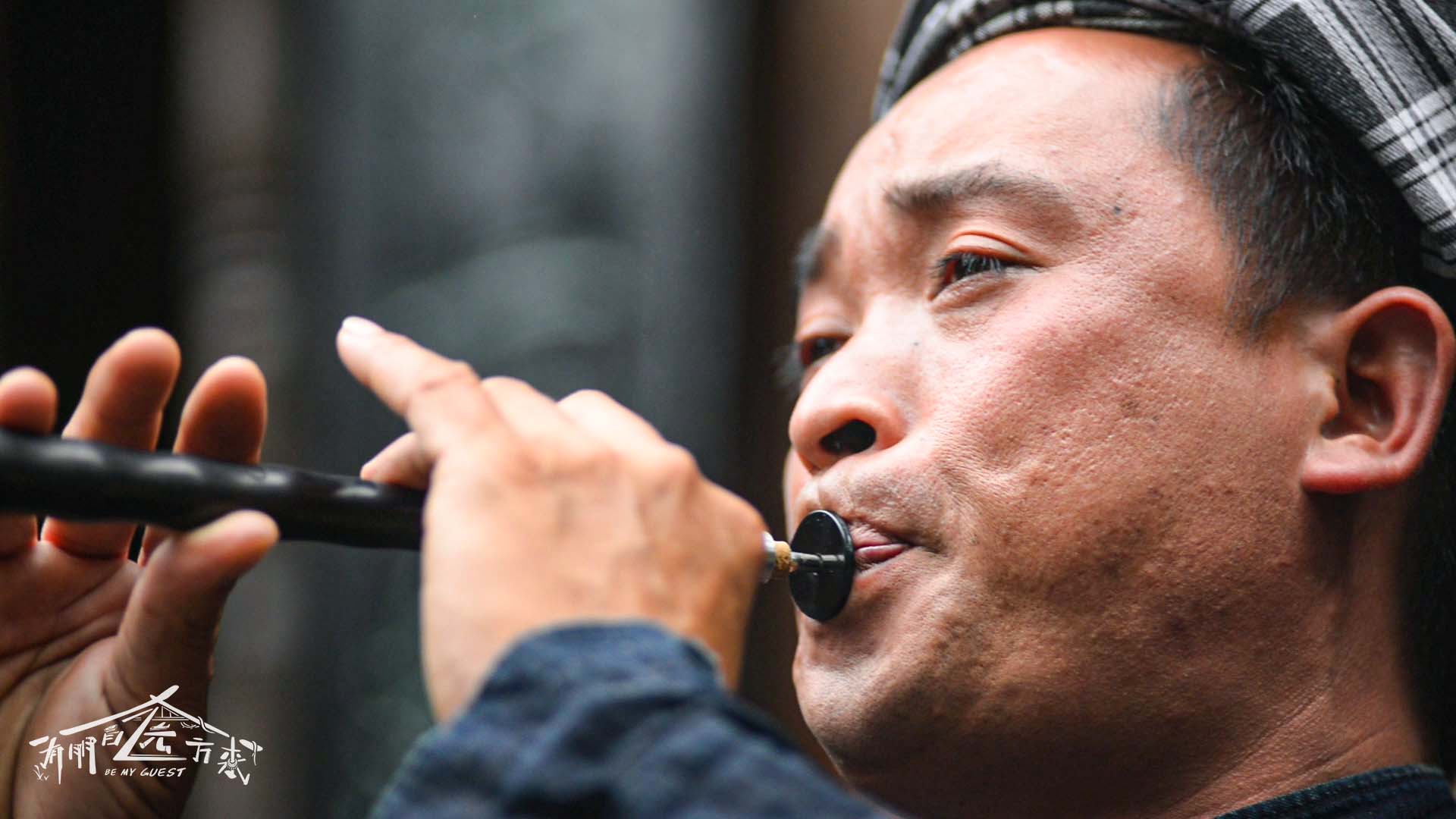
唐宋时期,八音早已在南北盘江的布依族聚居区域流传开来。
During the Tang and Song dynasties, the "Eight-Tone" had been circulated in the Bouyei people's colonies near Panjiang River.
而到了元明时期,又在其演唱内容加入了民俗、喜庆的内容,又在其基础上融合众多戏曲的特点,将说与唱加入到了合奏之中,大大丰富了演唱内容。
In the Yuan and Ming dynasties, the "Eight-Tone Sitting Singing" contains the content of folklore and celebration. In addition, singers added talking and singing to the ensemble by combining the characteristics of many operas, which greatly enriched the content of the singing.
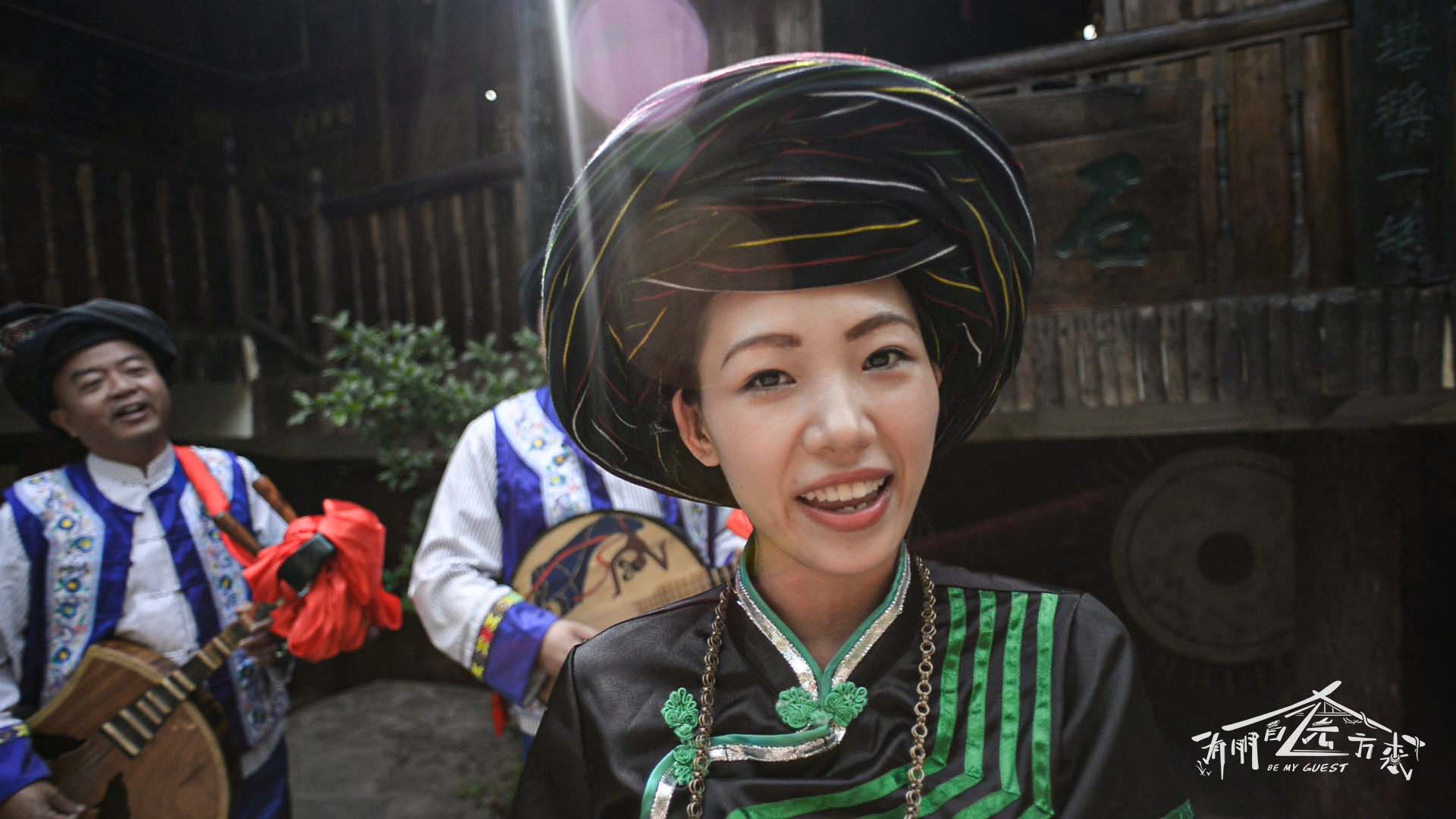
时间走到清代,布依已然八音盛极一时,在南北盘江流域的布依族聚落出现了众多"八音堂",作为教乐坊使用,专门用于传授布依八音技艺,可谓是“村村有教乐,寨寨有八音”。
During the Qing Dynasty, the "Eight-Tone" was extremely prosperous, and many "Eight-Tone Halls" had been established in the Bouyei settlements near the Panjiang River as music rooms to teach music. Such scenes were known as "Music and Eight-Tone are spread in every villages."
八音之器
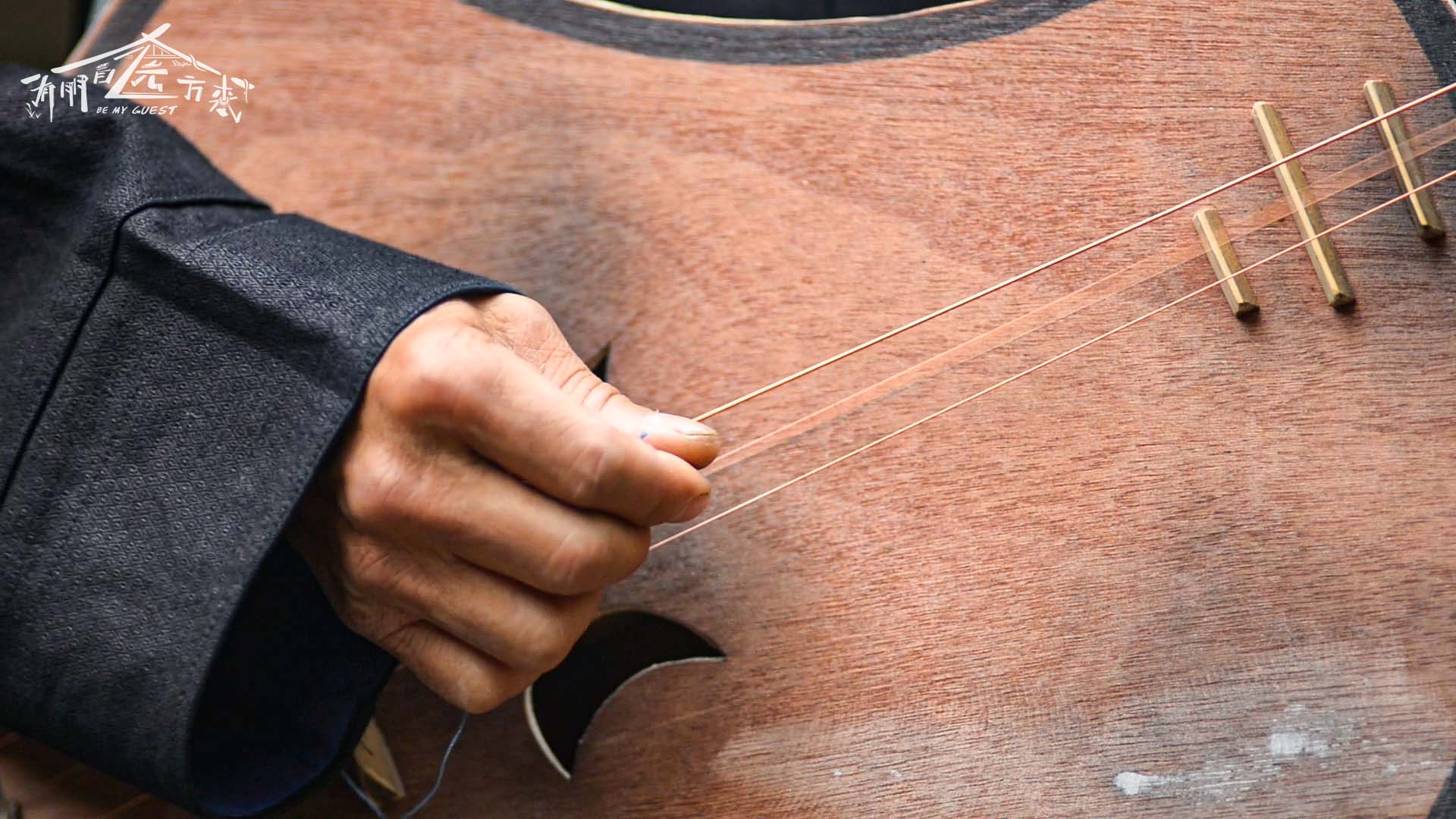
八音由来已久,早在周秦时期,人们把"金、石、土、革、丝、木、匏、竹"八类乐器按不同材质进行区分,称之为"八音",后来则是泛指所有乐器。
The "Eight-Tone" have a long history. As early as the Zhou and Qin Dynasty, people divided eight types of instruments into metal, stone, earth, leather, silk, wood, gourd, and bamboo by their different materials called "Eight-Tone", which makes a general reference for all Chinese instruments later.
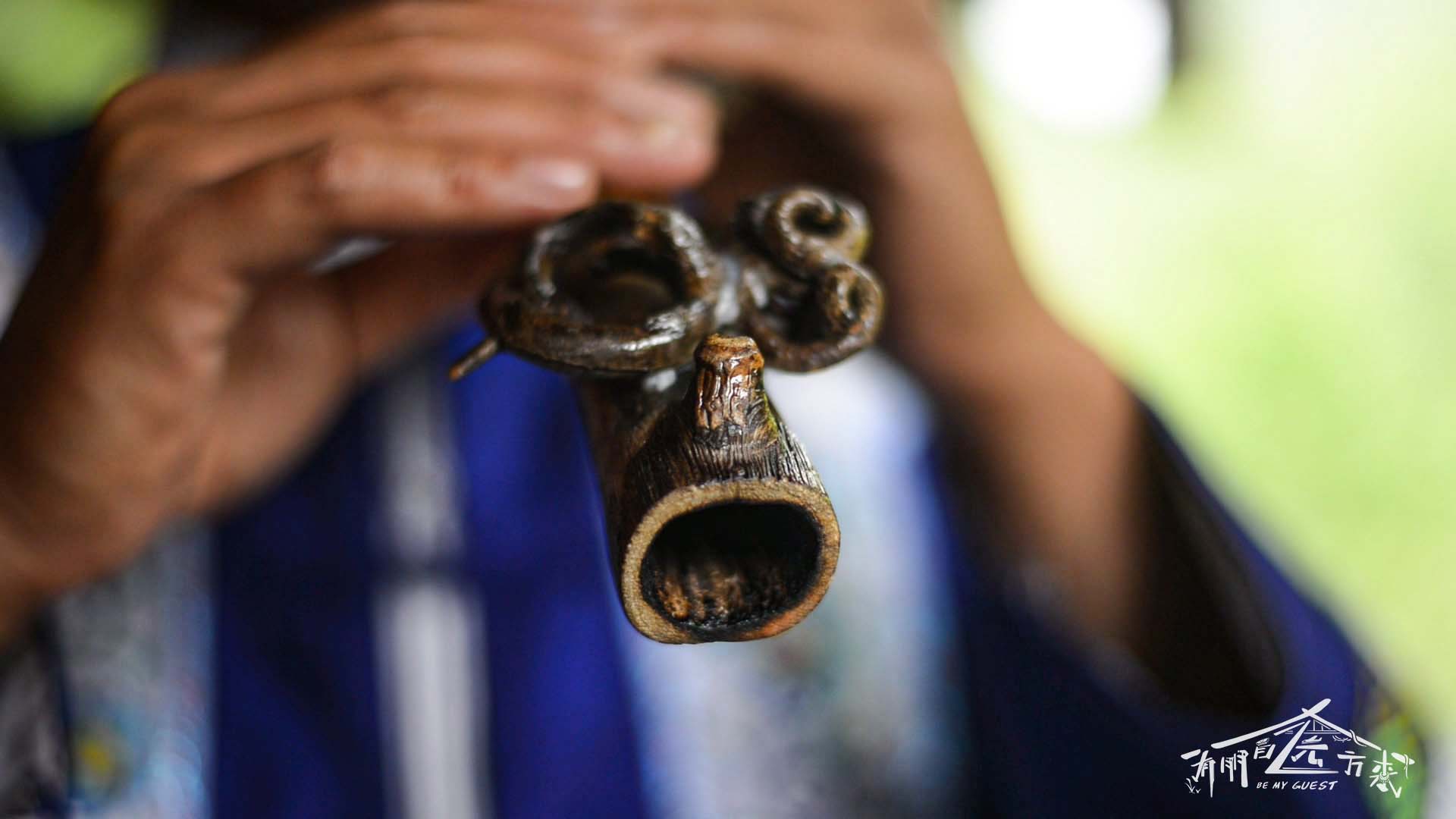
而如今“八音坐唱”的八音则是指萧筒、牛骨胡、葫芦琴、月琴、刺鼓、包包锣、小马锣、钗等器乐组合的名称。
Nowadays, the "Eight-Tone" of the "Eight-Tone Sitting Singing" contain Straight Flute, Cattle Bone Fiddle, Huluqin, Yueqin, Spiked Drums, Baobaoluo, Xiaomaluo, and Cha.
随着历史的发展,布依八音表演也加入勒尤、木叶等布依族乐器进行伴奏。
With the development of history, the "Eight-Tone" performance of the Bouyei also selected some Bouyei instruments like Leyou and Muye for accompaniment.
八音之韵
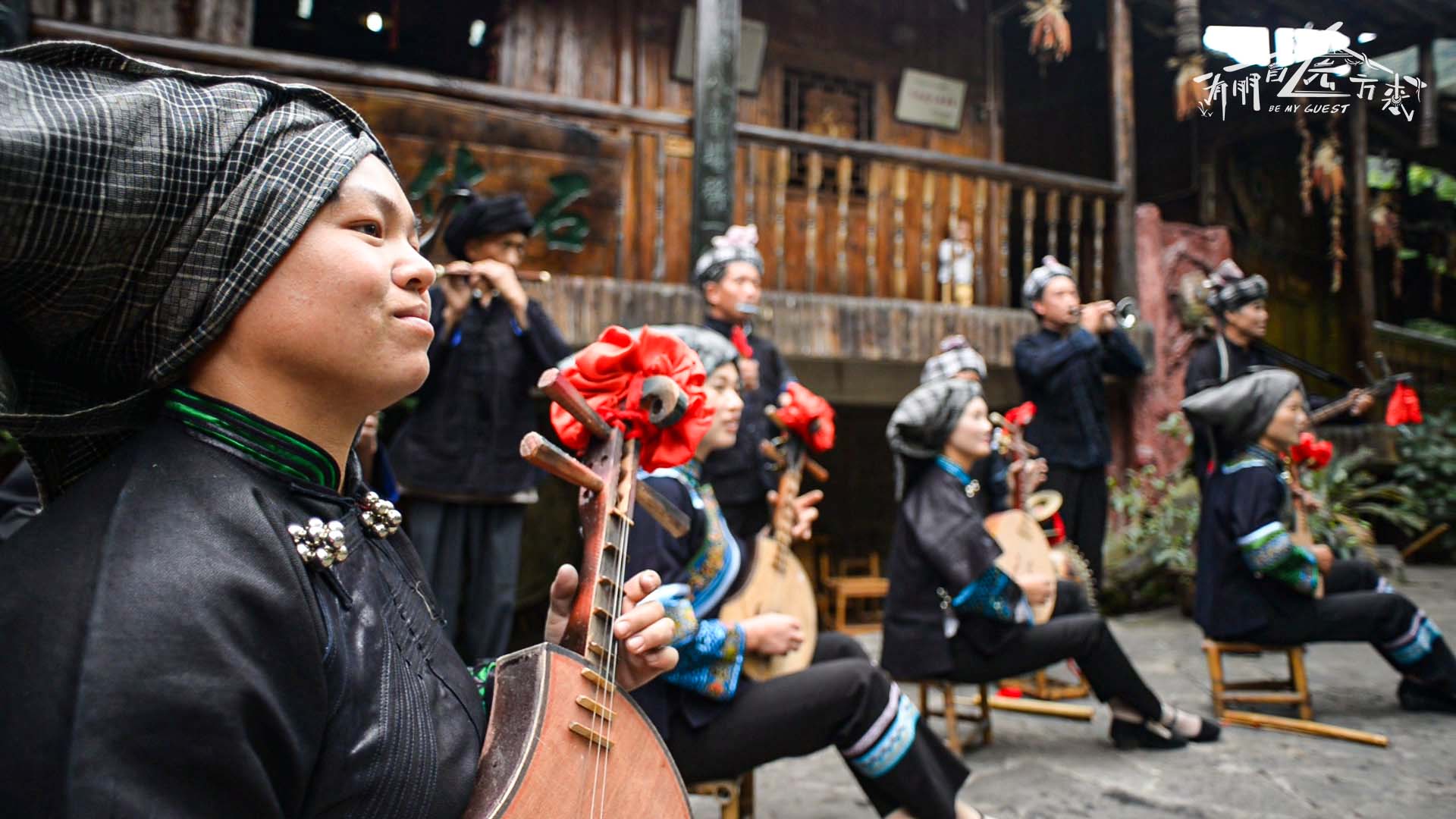
八音乐师会以八人分别持有八种不同的乐器进行围圈、轮递的方式进行说唱,他们常常以第一次人称歌唱来叙述故事,再以第三人称歌唱来解说故事。
The musicians of the "Eight-Tone" need sit in a circle with eight different instruments and sing alternately. They often tell the story by singing in the first person, and explain in the third person.
布依族没有文字,而八音坐唱则是纯音乐乐曲发展为表演唱、八音坐唱,以及后来延展出的布依戏曲,颇有一种“四乐同堂”的味道。
The Bouyei people have no writing language, and the form of the "Eight-Tone Sitting Singing" has been developed from pure music to sing performance. The "Eight-Tone Sitting Singing" and the other Bouyei operas, which were born based on it, has been regarded as the "Bouyei Music Family".
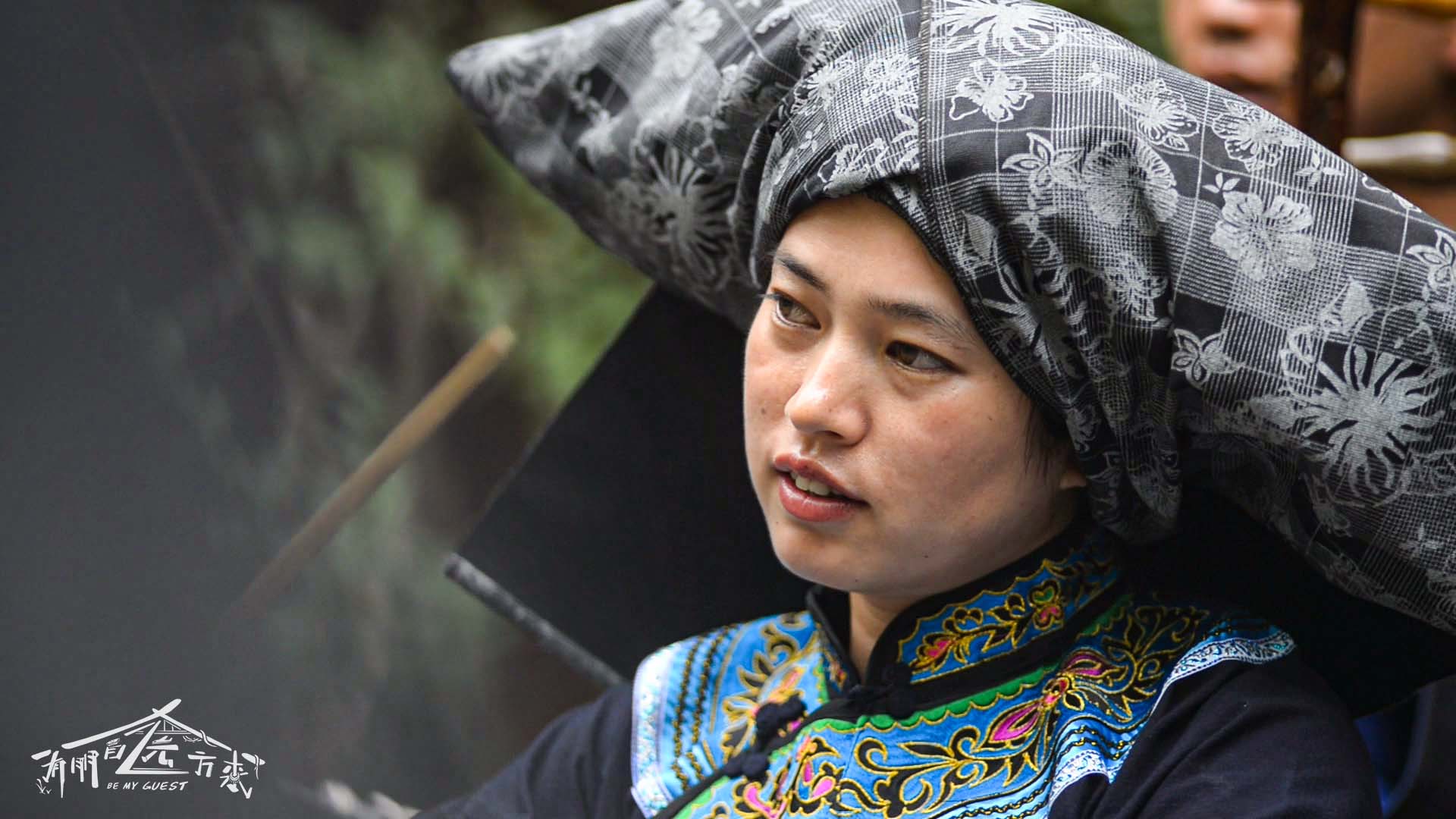
演唱过程之中,八音乐师都可据曲调、据物生词,表演时即兴发挥,用说唱形式表达身边之人、身边之事。
In the singing process, musicians can create lyrics based on the tunes and surrounding things. They perform in freestyle and tell the stories by talking and singing.
八音乐队乐器众多,而八音的演奏形式则是合奏。依照如今留存下来的古曲谱与现在民间流传的表演形式可以看出其"合乐"的特点。
There are many instruments in the "Eight-Tone Sitting Singing", and the performing form of it is ensemble, which has been showed according to the existing ancient music scores and current performing melodies.
旋律古朴、曲调流畅、唱腔优美、乐声悦耳的布依八音,现在则多在节日、婚丧、建房、祝寿等各类场合,已然是深受布依族人民喜爱的艺术形式。
The "Eight-Tone Sitting Singing" of the Bouyei, which is simple, smooth, beautiful, and pleasant, has been performing in various occasions in the daily life of the Bouyei people. It's very popular in the Bouyei settlements.
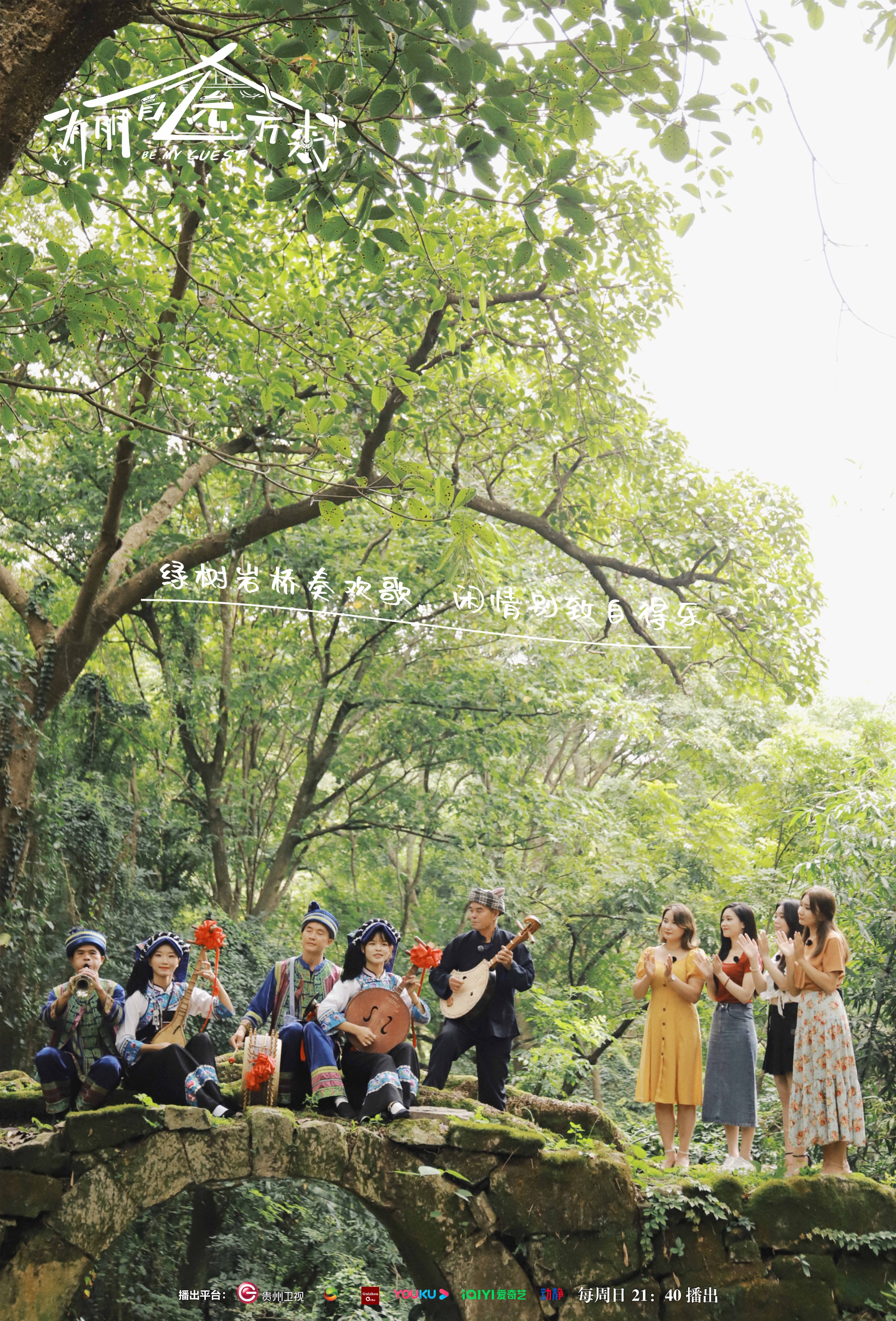
本周日晚 21:40
At 21:40 on November 20th, Sunday
与胜利、爱民和哈尼、习朵两对姐妹
一起来感受悠扬的布依之声。
Together with Botakoz & Tomiris
and Hani & Xiduo
Listen to the melodious voices of Bouyei.
出品:贵州卫视国际传播中心
撰稿:刘宇琛
摄影:张永瑞
翻译:靳阳 李秋辰
一审:张旖洵
二审:田胤星 李秋辰
三审:余晓莹


